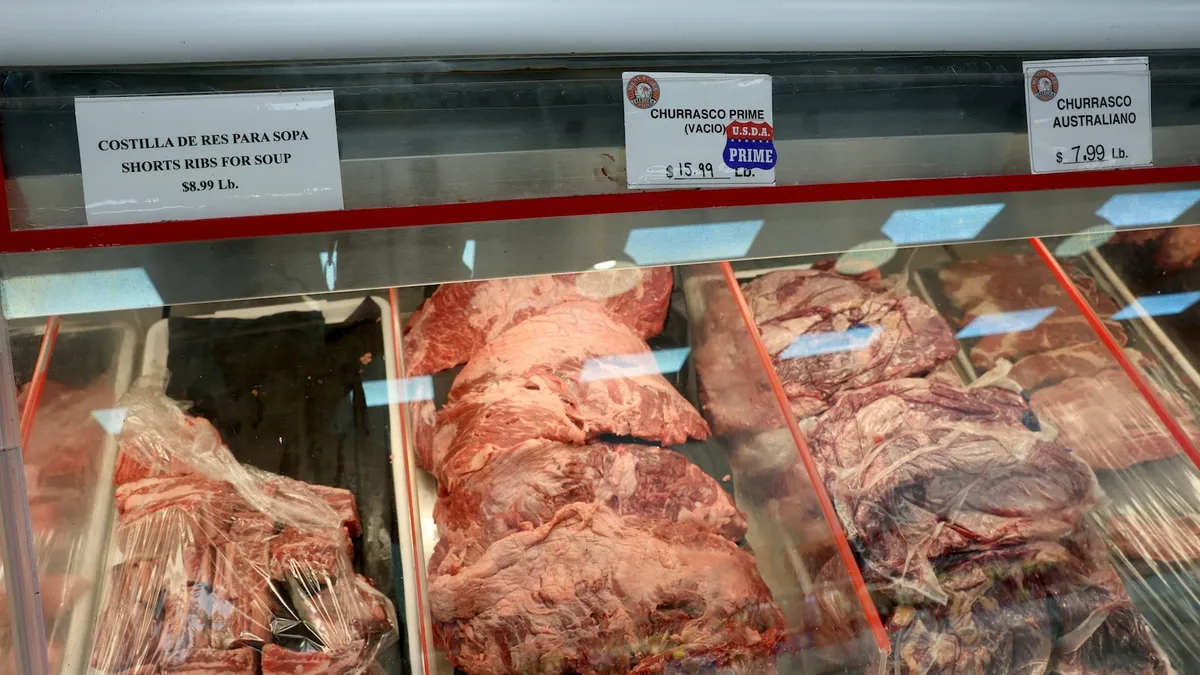
According to government data released on Friday, consumer prices rose 3% in September compared to the same month last year. This increase marks a continuation of a monthslong trend that has driven inflation to its highest level since January. Interestingly, the reported figure came in lower than many economists had anticipated. This latest data reflects a slight uptick from the 2.9% year-over-year increase recorded in August.
The recent acceleration of price increases has coincided with a series of tariffs implemented by President Donald Trump. Notably, beef prices surged nearly 15% over the year ending in September, raising concerns among ranchers about a plan to import beef from Argentina. This move aims to help reduce U.S. prices but has sparked significant controversy in the agricultural community.
On the other hand, egg prices, which have long been a symbol of rising costs, experienced a noteworthy decline of almost 5% in September. Currently, the price of eggs is approximately 1% lower than it was a year ago. Conversely, the price of coffee has seen a dramatic increase, soaring 19% over the past year, highlighting the diverse nature of price fluctuations across different sectors.
The White House has celebrated the September inflation figures, noting they fell below economists' expectations. Press Secretary Karoline Leavitt took to social media to declare this data as good news for American families. However, she also warned that the ongoing government shutdown might result in no inflation report for October, creating uncertainty for businesses, markets, families, and the Federal Reserve.
Due to the shutdown, the release of important economic information has been delayed, with the latest inflation data arriving more than a week later than initially scheduled. This situation has left the economy in a precarious state, as inflation rises while hiring slows, raising concerns about a potential economic scenario known as stagflation.
The current economic landscape has placed the Federal Reserve in a challenging position. If the Fed opts to raise interest rates to combat tariff-induced inflation, it risks pushing the economy into a downturn. Conversely, lowering rates to stimulate growth amidst a hiring slowdown could exacerbate inflation by increasing consumer spending.
Last month, the Fed took a proactive step by cutting its benchmark interest rate by a quarter of a percentage point, marking the first interest rate cut of the year. This decision was aimed at reviving the labor market, but it has created a delicate balancing act for policymakers. Fed Chairman Jerome Powell acknowledged the tension in their objectives, emphasizing that the balance of risks has increasingly tilted toward concerns about sluggish hiring.
Looking ahead, market analysts widely expect another quarter-point rate cut during the Fed's upcoming meeting, as indicated by the CME FedWatch Tool, which gauges market sentiment. However, the elevated inflation reading released on Friday may lead Fed officials to reconsider their approach. A rate cut could heighten the risk of increased demand, further driving up prices.
In summary, while tariffs have contributed modestly to the recent uptick in overall inflation, analysts suggest that the primary drivers of price increases are linked to rising costs in the housing and food sectors, with minimal connections to the tariffs imposed by the Trump administration. As the economic landscape evolves, all eyes remain on the Federal Reserve's next moves in this complex environment.